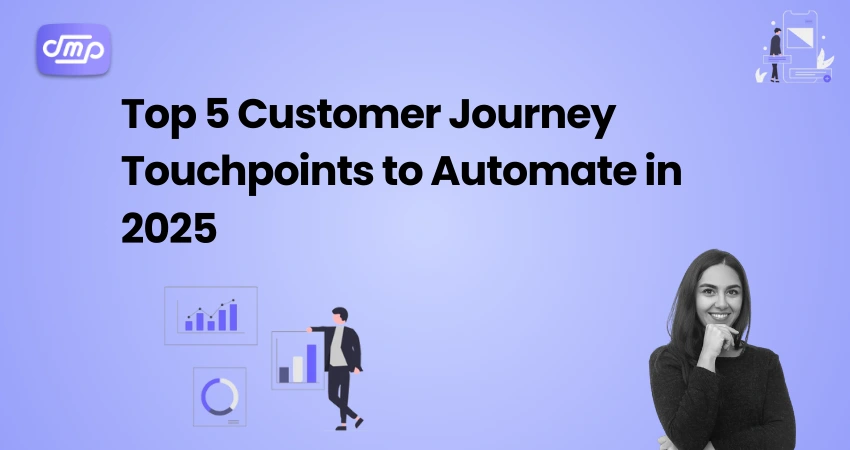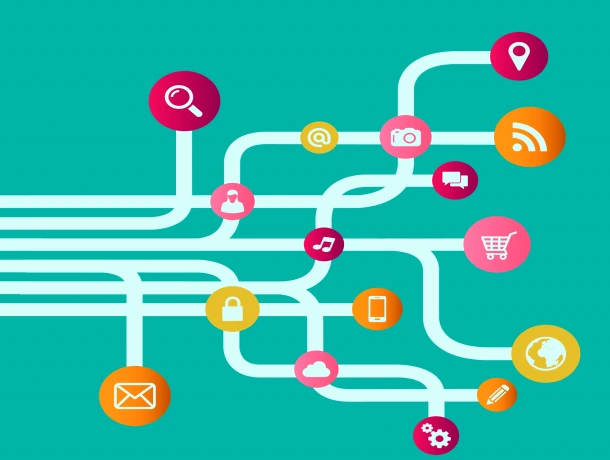
- July 11, 2025
- Digital Marketing, seo
- Digital Marketing
Table of Contents
In the current competitive digital marketing environment, it is essential to comprehend and enhance your customer journey touchpoints for achieving business success. These touchpoints — every interaction a customer has with your brand — significantly shape their overall experience and affect their purchasing decisions.
As we approach 2025, automation has evolved from being merely a convenience to becoming a strategic asset. By automating the appropriate customer journey touchpoints, you can increase efficiency, provide personalized experiences on a larger scale, and maintain a competitive edge.
However, which touchpoints are the most significant? In this article, we will examine the top 5 customer journey touchpoints that you should consider automating in 2025 to improve engagement, enhance conversions, and foster long-term customer relationships.
1. Lead Capture and Website Interaction
The initial impression frequently dictates whether a visitor transitions into a lead or merely exits the site. Consequently, the lead capture phase is among the most vital customer journey touchpoints to automate in 2025.
By incorporating intelligent tools such as chatbots, AI-driven popups, and exit-intent forms, you can interact with users in real time and steer them towards conversion without the need for manual effort. Automated lead capture guarantees that you are gathering essential data around the clock, even when your team is not available.
Essential Automation Strategies:
- Chatbots: Streamline FAQs, product questions, or appointment bookings.
- Popups & Forms: Implement personalized triggers based on user behavior (e.g., time spent on the page, scroll depth).
- CRM Integration: Seamlessly transfer captured leads into your email marketing or sales pipeline for prompt follow-up.
Investing in automation in this area not only enhances user experience but also optimizes every chance to convert traffic into leads—right from the very first touchpoint.
2. Welcome Emails and Onboarding

Once a lead is captured, the subsequent vital customer journey touchpoint is the welcome and onboarding experience. This phase establishes the foundation for your relationship with the customer and presents a significant opportunity to foster trust and engagement from the outset.
Automating welcome emails and onboarding sequences guarantees that every new subscriber, user, or customer receives a prompt, personalized introduction to your brand—eliminating the need for manual intervention from your team.
Add Your Heading Text Here
- Welcome Email Series: Implement an automated series that introduces your brand, emphasizes key offerings, and clarifies expectations.
- Personalized Content: Leverage data and content such as user behavior or interests to provide pertinent tips, product recommendations, or instructional guides.
- Onboarding Checklists: For SaaS or service-oriented businesses, assist users in navigating initial setup or usage steps with automated reminders or tutorials.
By automating this customer journey touchpoint, you establish a uniform and scalable onboarding experience that enhances customer confidence, minimizes drop-offs, and promotes early engagement.
3. Abandoned Cart Follow-Ups

Abandoned carts represent one of the most prevalent yet frequently neglected customer journey touchpoints. By 2025, it will be essential for any business aiming to recover lost revenue and re-engage customers with high intent to automate this stage.
When a customer places items in their cart but leaves without finalizing the purchase, it does not necessarily indicate a lack of interest; rather, it often suggests they were distracted or required additional time. Automated follow-up emails or SMS reminders can serve as a gentle prompt to encourage them to complete their purchase.
Key Automation Strategies:
- Timed Reminder Emails: Initiated 1–3 hours post-abandonment, including a link to continue the checkout process.
- Incentivized Messages: Provide limited-time discounts or free shipping to motivate action.
- Product Retargeting Ads: Showcase the abandoned products across platforms such as Facebook or Google.
Automating this customer journey touchpoint aids in minimizing friction, enhancing conversion rates, and maintaining your brand’s visibility—particularly in competitive markets.
4. Post-Purchase Engagement
The journey doesn’t end at checkout — in fact, post-purchase engagement is one of the most impactful customer journey touchpoints you can automate. It’s your chance to build loyalty, encourage repeat purchases, and turn one-time buyers into long-term advocates.
Automation ensures every buyer receives consistent communication that enhances their experience with your brand.
Key Automation Strategies:
- Thank-You Emails: Instantly acknowledge the purchase with order details and a warm message.
- Product Usage Tips: Send helpful guides or video tutorials to increase product satisfaction.
- Cross-Sell Suggestions: Recommend complementary products based on the customer’s order history.
- Loyalty or Referral Program Invites: Introduce rewards and incentives to stay engaged with your brand.
By automating this customer journey touchpoint, you deepen customer relationships, drive repeat business, and reduce post-sale silence.
5. Feedback & Review Requests
Gathering customer feedback is not solely focused on enhancing your products and services — it also serves as a significant customer journey touchpoint that fosters credibility and trust. By 2025, the automation of feedback and review requests will guarantee that no chance for valuable insights or social validation is overlooked.
After a customer has had sufficient time to experience your product or service, a timely follow-up requesting their feedback demonstrates that you appreciate their experience. This approach also heightens the chances of obtaining public reviews that can sway potential buyers.
Essential Automation Strategies:
- Review Request Emails: Dispatch automated emails a few days post-delivery, soliciting reviews for your product or service.
- Net Promoter Score (NPS) Surveys: Automatically assess customer satisfaction and pinpoint brand advocates.
- Feedback Forms: Implement straightforward, mobile-optimized forms to gather insights regarding the customer journey.
By automating this crucial Customer Journey Touchpoint, you not only enhance your offerings but also cultivate a community of dedicated, outspoken customers who can advocate for your brand.
Conclusion
As customer expectations continue to escalate in 2025, automating crucial customer journey touchpoints has transitioned from being optional to becoming essential. From the processes of capturing leads and welcoming new customers to the recovery of abandoned carts and the collection of feedback, each automated interaction enhances your relationship with the customer while conserving valuable time and resources.
By concentrating on the five primary touchpoints — Lead Capture, Welcome & Onboarding, Abandoned Cart Follow-Ups, Post-Purchase Engagement, and Feedback & Reviews — you establish a seamless, personalized journey that fosters satisfaction and promotes growth.
Begin with small steps, select the appropriate automation tools, and enable your brand to operate more intelligently — not with greater effort — at every stage of the process.











